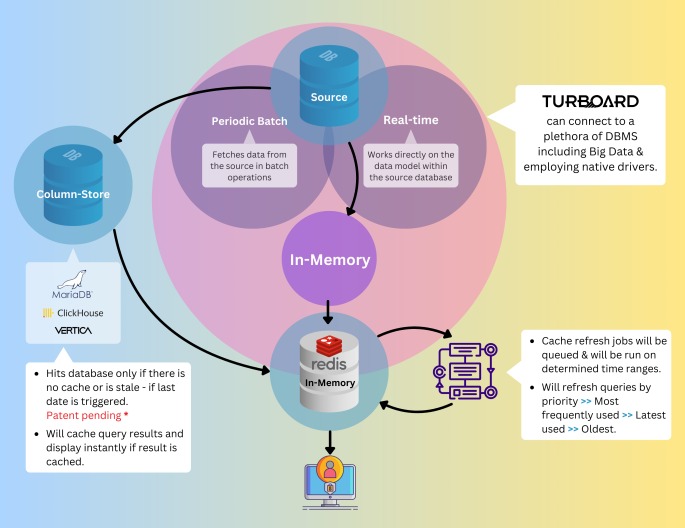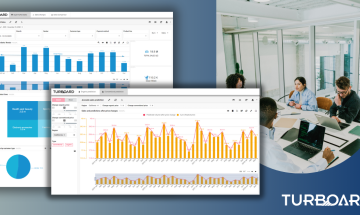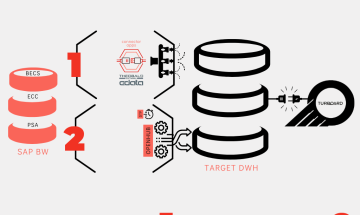
Business Intelligence (BI) platforms are designed to analyze data from various sources to provide valuable insights for businesses. The ability to connect seamlessly to a variety of data sources is critical for BI tools to function effectively. However, challenges such as data latency, inconsistent data formats, low-performance data sources, and the need to process large volumes of data can hinder the performance of BI tools.
At TURBOARD, we understand the complexities involved in achieving optimal performance and speed. Our approach not only focuses on providing effective data connection options to a plethora of data sources, but also addresses the obstacles and limitations commonly faced in the industry.
In this blog, we'll explore the two primary data connection options that any good BI tool should offer and how TURBOARD overcomes these hurdles to ensure peak performance and speed without compromising on security.
Join us as we uncover the strategies behind TURBOARD's success in navigating the complexities of data connectivity vs. BI performance and speed.
Data Connection Options
Robust data connectivity is essential for success in the world of business intelligence. A strong BI tool should offer a range of connection options to accommodate different data sources and analytical needs, leveraging the latest high-performance technologies. Seamless integration with data sources, from real-time streams to batch processing, is a fundamental requirement.
TURBOARD provides two primary data connection options, each tailored to specific business needs and use cases:
(1) Real Time Connection (Online)
This option allows users to work directly on the data model within the source database in real-time. Here's an overview of this option:
- Description: The real-time connection option enables users to interact directly with the data source, providing instantaneous access to live data streams.
- Pros: Users have access to real-time data, enabling immediate insights and decision-making.
- Cons: May pose a strain on the database system during peak usage times. Performance may be impacted if the DBMS is not optimized for business intelligence workloads.
- Suitability: Suitable for scenarios where real-time data analysis and immediate access to live data are essential.
How Does TURBOARD Achieve Superior Performance in Real-Time Connections?
TURBOARD sets itself apart by delivering exceptional performance in real-time data connections. Unlike other BI tools that may rely on standard methods, TURBOARD leverages cutting-edge technologies and optimized strategies to ensure that users experience minimal latency and maximum speed when working with live data streams.
One notable difference lies in the utilization of native drivers for optimized performance. While many BI tools connect to data sources through generic ODBC (Open Database Connectivity) drivers, TURBOARD employs native drivers, providing a direct and efficient connection to various database management systems (DBMS), including traditional databases and big data platforms like Kudu.
By utilizing native drivers, TURBOARD optimizes performance, ensuring that users can seamlessly interact with live data streams without experiencing significant delays or performance bottlenecks. This approach is particularly beneficial for businesses requiring immediate insights and decision-making capabilities from their BI tools.
(2) Periodical Batch Connection
This option involves fetching data in batch operations and storing it for analysis. Here's a closer look at what this option entails:
- Description: The periodical batch connection fetches data from the source in batch operations, allowing for efficient storage and retrieval. This means that the data is fetched and stored in a database or data storage system where it can be processed and analyzed by the BI tool. The storage location could be a data warehouse, a column-oriented database, or any other storage system used for BI purposes.
- Pros: No load in the database during daytime operations, resulting in faster query performance, as this method is optimized for analytical processing.
- Cons: Displays data from the previous day, which may not be suitable for real-time analytics.
- Suitability: Well-suited for businesses requiring reasonably updated analyses rather than up-to-the-minute insights.
How Does TURBOARD Achieve Superior Performance in Periodical Batch Connections?
TURBOARD excels in periodical batch connections by offering users the flexibility to choose their database management system (DBMS), unlike some other BI tools that force users to move data to a specific source.
TURBOARD users can select from advanced DBMS options such as MariaDB ColumnStore, Vertica, and ClickHouse, each with its own strengths. These column-store technologies organize data by columns rather than rows, enhancing query performance, especially for analytical workloads typical in business intelligence applications.
Unlike BI solution providers that force their proprietary DBMS solutions, which may not perform optimally in all environments, TURBOARD provides a range of options to suit different needs. For example, some BI solutions may rely on in-memory batch moving, which can be costly on hardware and challenging to scale for big data environments. TURBOARD's approach offers users the freedom to choose a DBMS that best fits their requirements, ensuring optimal performance and efficiency for their specific use cases.
Additionally, by utilizing native drivers for direct and optimized access to these databases, TURBOARD enhances performance capabilities, making it an ideal choice for users dealing with low-performance data sources.
In-Memory Processing
Following the establishment of the data connection, TURBOARD leverages an in-memory database system for efficient data processing. In-memory database systems, such as Redis (Remote Dictionary Server), are celebrated for their speed and versatility. They serve various functions, acting not only as a database but also as a cache and message broker.
TURBOARD's choice of in-memory processing technology reflects its commitment to delivering high-performance solutions. By utilizing Redis for caching, TURBOARD ensures that query results and frequently accessed data are temporarily stored within the in-memory database system, facilitating swift access and retrieval upon user request.
Additionally, TURBOARD's approach includes a patented method (patent pending) for refreshing the cache and accessing the database. When a user query hits the database, TURBOARD checks if the result is cached. If the result is cached, it is instantly displayed.
However, if the data is not present in the cache or has become stale, the in-memory database system seamlessly retrieves it from the primary database system. This innovative approach not only ensures reduced load on the database but also provides users with instant results when data is cached.
Moreover, TURBOARD employs cache refresh jobs to maintain data freshness and relevance. These jobs are queued and executed at determined time ranges, ensuring that queries are refreshed based on priority levels. The system prioritizes the refresh of the most frequently used, latest used, and oldest queries, guaranteeing that users always have access to the most up-to-date data.

To reveal striking insights hidden in your own data, discover 
Are you curious?





